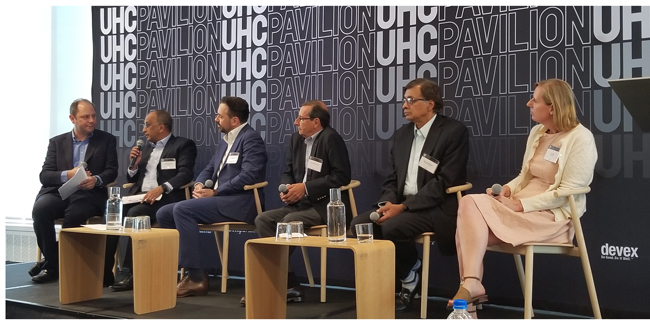 At the meeting on universal health coverage, Devex hosted a panel discussion how to solve the global crisis resulting from uncorrected poor vision. (L to R) Richard Jones of Devex; Jayanth Bhuvaraghan of EssilorLuxottica and Essilor SAS; Nick Martin of The Fred Hollows Foundation; Professor Serge Resnikoff of the Vision Impact Institute; Allyala Nandakumar, Office of the Global AIDS Coordinator, USA and Vision Impact Institute; and Liz Smith, co-founder and CEO, Eyelliance. At the meeting on universal health coverage, Devex hosted a panel discussion how to solve the global crisis resulting from uncorrected poor vision. (L to R) Richard Jones of Devex; Jayanth Bhuvaraghan of EssilorLuxottica and Essilor SAS; Nick Martin of The Fred Hollows Foundation; Professor Serge Resnikoff of the Vision Impact Institute; Allyala Nandakumar, Office of the Global AIDS Coordinator, USA and Vision Impact Institute; and Liz Smith, co-founder and CEO, Eyelliance.
|